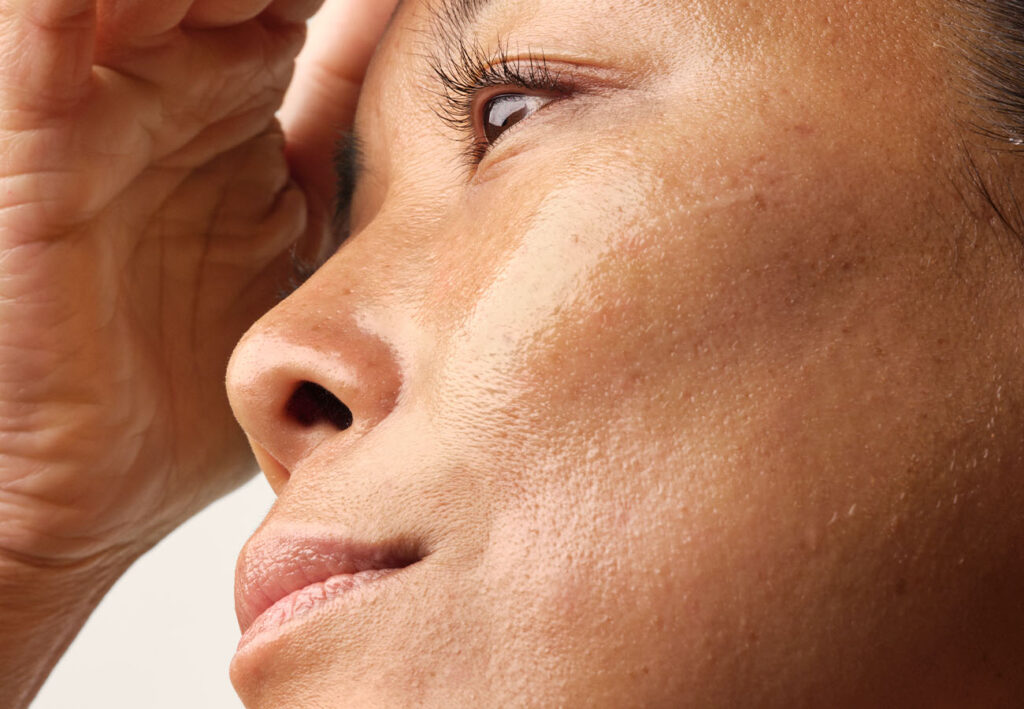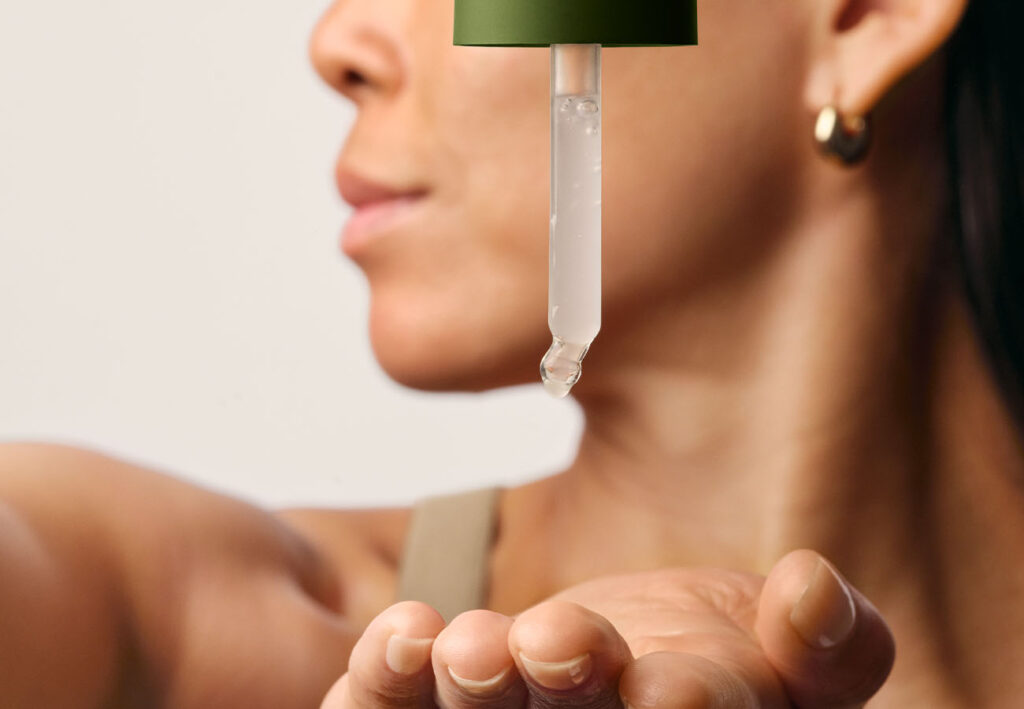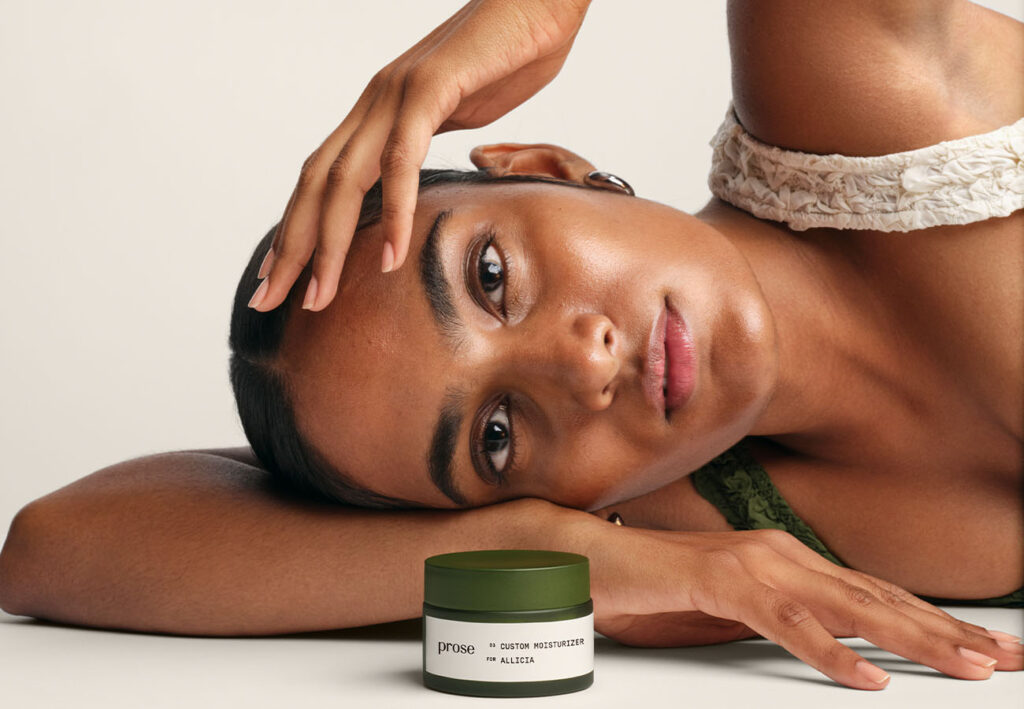Factors That Affect Your Skincare Routine
First, you have to factor in numerous variables about your own biology and environment. The following are some of the most important things that impact your skin and any regimen that supports it:
Natural oil levels:
Is your skin typically oily, dry, or somewhere in between? (This could also include being oily in some parts while dry in others, known as “combination skin”.)
Air and water quality:
Your environment plays a huge role in skin health (and hair health too), with factors like city pollution and water hardness having aging and drying impacts on the skin, respectively (among other effects). Dr. Green explains further: “The buildup of dirt, debris, and pollution on the surface of the skin can contribute to acne breakouts and exacerbate skin conditions like eczema and dermatitis. Hard water refers to water that contains high concentrations of minerals. This can be damaging to the skin because it disrupts the skin’s protective barrier, especially for those with sensitive skin.”
Age:
As we age, skin naturally becomes thinner and less resilient. It heals and turns over more slowly, and can become more prone to things like hyperpigmentation, wrinkles, dark circles, and dryness. Dr. Green benchmarks the 30s as a key decade of one’s own experience with this change: “In our 30s, collagen production in our skin slows. Collagen is a protein naturally occurring in our skin that provides support and structure. A loss of collagen leads to signs of aging, such as fine lines, wrinkles, dullness, and skin laxity. The skin also becomes thinner and drier, and there is a loss of fat that contributes to the loss of volume in the facial structure. If there is a history of excessive sun exposure, then sun spots, age spots, and signs of premature aging will also be common.”
Seasonality:
Moisture levels in the air majorly impact your skin’s day to day health—and its long term health is affected by these patterns. “The air becomes drier, and humidity decreases as the seasons change from summer to fall and winter,” Dr. Green explains. “To balance the lack of moisture, it is important to switch skincare products to hydrating ingredients.” Generally, the more moisture, the better—both in terms of your environment and the products you use. (Bonus tip: Sleep with a humidifier especially in winter, and turn down that A/C in summer.)
Proneness to acne and other proclivities:
What types of conditions should your skincare regimen consider and/or treat? Like acne, hyperpigmentation, dullness…
Hormones and stress:
Hormonal shifts can significantly impact skin, from momentarily increasing sebum production and increasing acne, to bigger-picture changes that come along with health changes. Everyday stress can trigger hormonal imbalances and you should have products at the ready that can counter these momentary changes.
While that may feel like a lot of variables to consider, it can usually be boiled down to a simple regimen. What the above factors can indicate are the ingredients and properties you need to look for in your core products. If you have dry skin, are acne prone, in your 30s, and living in a big city with hard water, then you know that you need hydrating products that won’t clog pores (and can also help unclog them), while also boosting your skin’s defenses against the aging effects of city toxicity and the drying effects of hard water.
And believe it or not, this can usually be achieved in 3 key steps.
The Baseline Skincare Routine
Here are the three main products that every person should have in their skincare regimen, and the general frequency of use for each.
Cleanser, twice a day
In the morning and before bed, you should wash your face with a cleanser that suits your skin type and life variables. If you are overly oily, it should purify the skin without drying it out entirely. If you have naturally dry skin, then it should simultaneously cushion the skin while it washes. While cleansers aren’t actively on the skin very long, their ingredients should still thoughtfully interact with your skin to maintain harmony. This “resets” your skin’s canvas and readies it for the next products.
“Cleansing as the first step in the skincare routine is important because it gets rid of dirt and debris buildup before applying serums,” Green notes. “The accumulated pollution on the skin can cause acne breakouts and aging, and having a layer of dirt and grime will prevent maximum absorbance of the subsequent serums.”
Cleansers come in a variety of formulas, but most commonly in gels and creams. This is usually a matter of textural preference or skin type.
Serum, as needed
Serums can do many things, which we’ll get into, but the thing that they all have in common is their lightness and ability to seep further into the skin. It is in these deeper layers of the skin where corrective changes can happen, both immediately and in the long term.
There are many ingredients you can get in a serum, and most target specific skin needs such as dryness, fine lines, hyperpigmentation, and more. For example, a serum can “plump” the skin if it deploys hyaluronic acid, which can attract and absorb 1,000 times its weight in water. Alternatively, if a serum uses salicylic acid, then it can balance oil production while freeing the pores of dead skin and sebum buildup (thus preventing and reducing acne, while also exfoliating the skin).
Some people apply multiple serums in a session, or they separate serums into morning and night regimens, while others might have a “hero” serum that provides multiple nourishing and corrective abilities in one fell swoop. (This one-stop treatment serum is Prose’s own approach.) The common ground among all serums, though, is that they should be applied after cleansing and before the next step.
Moisturizer, twice a day
A moisturizer is the final step (aside from SPF in the morning!) in your skincare routine. While it has nourishing properties, this product does far more than moisturize. It is an active defense against environmental factors like pollution and dryness, reinforcing your skin’s own barrier functions. (And as we age, this becomes ever more imperative due to skin losing resilience.)
This category of products is often distinguished by overall density. People with oily and acne-prone skin usually need lighter formulas, free of any potentially pore-clogging ingredients, while people with dryer skin prefer richer, deeply hydrating recipes to account for a lack of natural nourishment.
Because the moisturizer sits atop the outer layer of your skin and is denser than serums, it must be applied last in the regimen, otherwise it will hinder absorption of the serum ingredients. Once you apply your moisturizer in the morning, don’t forget to finish off your skin routine with an SPF!
Prose Custom Skincare Routine
If you are looking to start a skincare regimen—or to build one that is tailored to you and your skin/environmental variables—then take Prose’s skincare consultation to find customized cleanser, serum, and moisturizer formulas that work best for you.
Always made to order. Never made to waste.
Exclusive Trial Offer Get 60% Off + Free Gift







